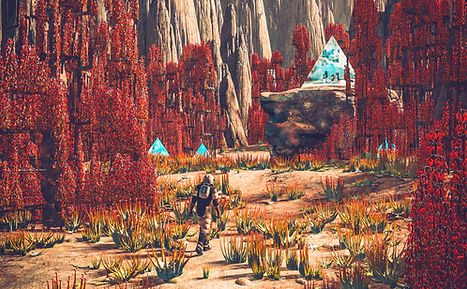
there's No place like 2026
Visualising future success is a potent tool in business, as it not only enhances goal clarity but also boosts self-confidence, essential for achieving high performance.
This concept aligns well with the Snapshot concept, where envisioning a vivid future can guide strategic paths and motivate teams towards realizing envisioned achievements.
Studies have shown that guided imagery can significantly relieve stress and enhance focus, enabling individuals to navigate towards their goals with greater clarity and confidence. Additionally, visualising successful outcomes can boost confidence, turning the act of envisioning success into a powerful rehearsal for real-life achievements.
This evidence-backed approach underscores the efficacy of our Snapshot for Nuutology. Let this page be your gateway to a future brimming with possibilities, where the paths we envision today become the milestones we celebrate tomorrow.


WHAT IS SUCCESS VISUALISATION
visualising future success for your business is crucial, as evidence suggests a significant impact on productivity, engagement, and overall business outcomes. Engaged employees, as defined by Gallups research, are not only more productive but also contribute to higher customer satisfaction and profitability, underlining the importance of fostering an engaged workforce.
In productions like "Jason and the Argonauts," the use of key drawings plays a crucial role in bringing clarity to the director's vision, conveying the intended emotion, and enabling the director to guide the team remotely. Key drawings, often detailed storyboards or concept art, serve as visual blueprints that communicate complex scenes, character movements, and special effects to the entire production team.
For example, the iconic stop-motion animation sequences crafted by Ray Harryhausen in "Jason and the Argonauts" required precise planning and visualization. These key drawings would outline the dynamic interactions between live actors and animated figures, ensuring that every frame aligned with the emotional tone and narrative pace set by the director. This meticulous approach to pre-visualization helped bridge the gap between Harryhausen's innovative animation techniques and the live-action footage, creating a cohesive and immersive cinematic experience.
By providing a clear visual reference, key drawings enable directors to effectively convey their creative intent to animators, cinematographers, and other team members, even when not physically present. This facilitates a more collaborative, engaged and efficient workflow, allowing the team to maintain a unified creative direction and make informed decisions that enhance the storytelling and emotional impact of the film. This is no different to teams within any business setting.
Further research indicates that a strong correlation exists between employee engagement and organisational productivity, highlighting the need for businesses to cultivate environments that promote engagement for enhanced performance and success.
Moreover, Thomas emphasises that highly engaged teams can improve productivity by 17%, showcasing the direct link between employee engagement and operational efficiency. This underlines the critical role of visualising success and creating an engaging work environment in achieving business goals.
By focusing on the principles of engagement and the visualisation of future success, businesses can create a roadmap that not only aligns with their strategic objectives but also fosters a culture of high performance and commitment.
These insights underscore the value of incorporating visualisation techniques and engagement strategies into your business planning to drive success and growth.
For further reading on the impact of employee engagement on productivity and business success, consider exploring the insights provided by:
-
Gallup: The Powerful Relationship Between Employee Engagement and Team Performance
-
Thomas.co: How Employee Engagement Impacts Productivity
.jpg)





